Explore India
Discover The World
Vibrant de Gujarat Tour
Duration :20 Nights / 21 Days
Destination :india
Interested :Best of India Tours
Tour Months :January
Here begins your tour
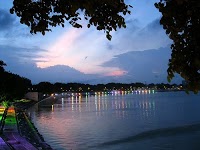 Day 1:ARRIVE AHMEDABAD
Day 1:ARRIVE AHMEDABAD
Arrive Ahmedabad, the capital of Gujarat, also called the “Manchester of the East” with it’s various heavy textile units. Overnight at the hotel. HOTEL
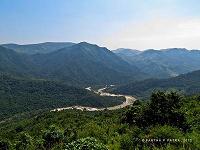 Day 6:BALARAM
Day 6:BALARAM
Today explore the Gowala and Garacia tribal villages around Balaram. Balaram is located around the hills bordering Gujarat and Rajasthan. The aborigines, the Gowala and Garacia are primarily sheep- herders, known for their unique culture and traditions. The Gowala and Garacia tribes are second cousins to each other, differing only in the manner of living. While the Gowala are more settled, the Garacia are still wanderers, and their women dress in slightly less ostentatious manner than the Gowala females. HOTEL (Breakfast)
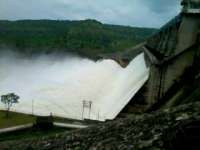 Day 11:BHUJ – GONDAL
Day 11:BHUJ – GONDAL
Morning visit Ethnology Museum : This place is recommended for its rich collection of books and paintings of prominent Kachchhis. On the outskirts of the town is the Bhujia Hill- Fort, which is still in good condition and has at its top the Temple of Bhujang Naag or serpent, the guardian deity of the city. To the west of the town is Hamirsar Lake, visited by holidaymakers of Anjar and Dhaneti to see shawl weaving, by Wankar community. Later drive about 06 hours to Gondol. Enroute Lunch in Wankaner at Royal Oasis. Arrive and check into Hotel. HOTEL (Breakfast)
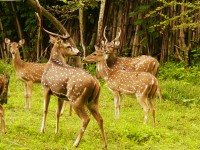 Day 14:SASANGIR
Day 14:SASANGIR
Early morning (0530 hrs) jeep safari intto the National Park. The Gir Forest National Park and Wildlife Sanctuary (also known as Sasan-Gir ) is the sole home of the pure Asiatic Lions. The count of 2375 distinct fauna species of Gir includes about 38 species of mammals, around 300 species of birds, 37 species of reptiles and more than 2000 species of insects. Another safari is scheduled in the afternoon around 1500 hrs. HOTEL (Breakfast)
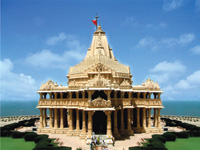 Day 19:BHAVNAGAR TO BARODA
Day 19:BHAVNAGAR TO BARODA
After breakfast drive approx 07 hours to Baroda. Pack Lunch from the Hotel. Arrive and check into hotel. Vadodara was the capital of the princely Gaekwad state prior to Independence. Rest of the day you are free to explore the city at your own. HOTEL (Breakfast)
Destination :india
Interested :Best of India Tours
Tour Months :January
Here begins your tour
 Day 1:ARRIVE AHMEDABAD
Day 1:ARRIVE AHMEDABADArrive Ahmedabad, the capital of Gujarat, also called the “Manchester of the East” with it’s various heavy textile units. Overnight at the hotel. HOTEL
Day 2:AHMEDABAD
Today, visit Sabarmati Ashram, situated on the western banks of the Sabarmati River. This ashram, founded in 1918 by Mahatma Gandhi, was the headquarters during the struggle for Indian Independence. It is now a spinning wheel factory where handmade paper and other local handicrafts are made. Hatheesing Jain temple is one of the best ornate Jain temples in Ahmedabad. This temple was built in the nineteenth century by a rich Jain merchant. This profusely decorated temple is dedicated to 15th Jain tirthankar or Jain Apostle-Dharmnath. Later visit the Calico Museum of Textiles (subject to prior permission - closed on Wednesdays), which exhibits both antique and modern textiles including rare tapestries, wall hangings and costumes. After that drive around the town to view some of the architecture of Charles Correa - one of India’s leading architects. Charles Correa was born in Hyderabad, India in 1930.Later enjoy Gujarati Dinner at The House of Mangaldas Giridhardas. HOTEL (Breakfast and Dinner)
Today, visit Sabarmati Ashram, situated on the western banks of the Sabarmati River. This ashram, founded in 1918 by Mahatma Gandhi, was the headquarters during the struggle for Indian Independence. It is now a spinning wheel factory where handmade paper and other local handicrafts are made. Hatheesing Jain temple is one of the best ornate Jain temples in Ahmedabad. This temple was built in the nineteenth century by a rich Jain merchant. This profusely decorated temple is dedicated to 15th Jain tirthankar or Jain Apostle-Dharmnath. Later visit the Calico Museum of Textiles (subject to prior permission - closed on Wednesdays), which exhibits both antique and modern textiles including rare tapestries, wall hangings and costumes. After that drive around the town to view some of the architecture of Charles Correa - one of India’s leading architects. Charles Correa was born in Hyderabad, India in 1930.Later enjoy Gujarati Dinner at The House of Mangaldas Giridhardas. HOTEL (Breakfast and Dinner)
Day 3:AHMEDABAD
Early morning we take you to a Heritage walk to the old city. It is a guided walk of two and a half hours, extremely well designed under the guidance and co-operation with local organization and Swaminarayan Trust, operated by a group of young volunteers. Juma Masjid and Later, visit Sidi Saiyed Mosque famous for its beautiful carved stone windows. Also on display are old weaving machines. Rani Rupmati's Mosque - Named after the Hindu wife of Sultan Mohammed Beghara. Dada Heri Step Well - One of the most elegant step wells located in the city of Ahmedabad, also known as Dada Hari Vav, quite an exciting place here. The Shaking Minarets (see only from the outside)- when one minaret is shaken, the other minarets vibrate too. HOTEL (Breakfast and Dinner)
Early morning we take you to a Heritage walk to the old city. It is a guided walk of two and a half hours, extremely well designed under the guidance and co-operation with local organization and Swaminarayan Trust, operated by a group of young volunteers. Juma Masjid and Later, visit Sidi Saiyed Mosque famous for its beautiful carved stone windows. Also on display are old weaving machines. Rani Rupmati's Mosque - Named after the Hindu wife of Sultan Mohammed Beghara. Dada Heri Step Well - One of the most elegant step wells located in the city of Ahmedabad, also known as Dada Hari Vav, quite an exciting place here. The Shaking Minarets (see only from the outside)- when one minaret is shaken, the other minarets vibrate too. HOTEL (Breakfast and Dinner)
Day 4:AHEMDABAD
NC Mehta Museum (Closed on Mondays) - an excellent example of the various schools of Indian miniature painting designed by Swiss-born architect, Le Corbusier. The exhibits at the museum include examples of various schools of Indian miniature paintings such as Pahadi miniatures and the famous Chaurpanchashika series. Hussain-Doshi's Gufa - It is a gallery housing the collaborative efforts of artist M. F. Hussain and the architect B. V. Doshi. Here, art and architecture fuse to become a unique experience, both complementing each other magnificently. Shreyas Folk Museum (Closed on Mondays) - displays the folk arts & crafts of Gujarat. HOTEL (Breakfast and Dinner)
NC Mehta Museum (Closed on Mondays) - an excellent example of the various schools of Indian miniature painting designed by Swiss-born architect, Le Corbusier. The exhibits at the museum include examples of various schools of Indian miniature paintings such as Pahadi miniatures and the famous Chaurpanchashika series. Hussain-Doshi's Gufa - It is a gallery housing the collaborative efforts of artist M. F. Hussain and the architect B. V. Doshi. Here, art and architecture fuse to become a unique experience, both complementing each other magnificently. Shreyas Folk Museum (Closed on Mondays) - displays the folk arts & crafts of Gujarat. HOTEL (Breakfast and Dinner)
Day 5:AHMEDABAD - BALARAM
Early this morning, depart for Balaram, an approx drive of 6 hours, enroute visiting Adalaj step well, located just outside Ahmedabad city limits. The vavs or baolis (step-wells) of Gujarat consist of two parts: a vertical shaft from which water is drawn and the surrounding inclined subterranean passageways, chambers and steps which provide access to the well. The galleries and chambers surrounding these ancient wells were often elaborately carved and became cool, quiet retreats during the hot summers.HOTEL (Breakfast)
Early this morning, depart for Balaram, an approx drive of 6 hours, enroute visiting Adalaj step well, located just outside Ahmedabad city limits. The vavs or baolis (step-wells) of Gujarat consist of two parts: a vertical shaft from which water is drawn and the surrounding inclined subterranean passageways, chambers and steps which provide access to the well. The galleries and chambers surrounding these ancient wells were often elaborately carved and became cool, quiet retreats during the hot summers.HOTEL (Breakfast)
 Day 6:BALARAM
Day 6:BALARAMToday explore the Gowala and Garacia tribal villages around Balaram. Balaram is located around the hills bordering Gujarat and Rajasthan. The aborigines, the Gowala and Garacia are primarily sheep- herders, known for their unique culture and traditions. The Gowala and Garacia tribes are second cousins to each other, differing only in the manner of living. While the Gowala are more settled, the Garacia are still wanderers, and their women dress in slightly less ostentatious manner than the Gowala females. HOTEL (Breakfast)
Day 7:BALARAM - MODHERA - PATAN - DASADA
Drive approx. 5 hours to Dasada En route visit the 11th century Sun Temple of Modhera. It is easily one of the finest examples of devotional architecture in Western India. Built in 1026AD the temple is dedicated to the Sun God, Surya, and stands high on a plinth overlooking a deep stone- steeped tank. As in the Sun Temple at Konark, this temple was designed so that the rays of the Sun would fall on the image of Surya (means sun) at the time of the equinoxes. Also visit Patan, the former capital of Gujarat and renowned for Patola saris, one of the finest hand-woven textiles in the world. Patola weaving with colored silk threads is done in the double Ikat style that originated in India and is also done in Bali. HOTEL (Breakfast)
Drive approx. 5 hours to Dasada En route visit the 11th century Sun Temple of Modhera. It is easily one of the finest examples of devotional architecture in Western India. Built in 1026AD the temple is dedicated to the Sun God, Surya, and stands high on a plinth overlooking a deep stone- steeped tank. As in the Sun Temple at Konark, this temple was designed so that the rays of the Sun would fall on the image of Surya (means sun) at the time of the equinoxes. Also visit Patan, the former capital of Gujarat and renowned for Patola saris, one of the finest hand-woven textiles in the world. Patola weaving with colored silk threads is done in the double Ikat style that originated in India and is also done in Bali. HOTEL (Breakfast)
Day 8:DASADA
This morning enjoy a safari into the Little Rann of Kutch. These are the salt flat areas that are home to endangered Asiatic Wild Ass, various wildlife and birds. The Rabari and Banjara are the two important tribes of this region who trade in salt. You will be exploring this area and meet these interesting and colorful people. Later you have a meeting with wildlife expert (Mr. Mujahid Malik – subject to confirmation closer to the date of travel) who will focus on local wildlife and its recent development. Camel Safari for 02 to 03 hours. Evening enjoy MHIR DANCE, performed by a band of local nomads ( 8 to 10 persons ) for 1 hour, in hotel premise, followed by sumptuous Barbeque Dinner. HOTEL (Breakfast and dinner)
This morning enjoy a safari into the Little Rann of Kutch. These are the salt flat areas that are home to endangered Asiatic Wild Ass, various wildlife and birds. The Rabari and Banjara are the two important tribes of this region who trade in salt. You will be exploring this area and meet these interesting and colorful people. Later you have a meeting with wildlife expert (Mr. Mujahid Malik – subject to confirmation closer to the date of travel) who will focus on local wildlife and its recent development. Camel Safari for 02 to 03 hours. Evening enjoy MHIR DANCE, performed by a band of local nomads ( 8 to 10 persons ) for 1 hour, in hotel premise, followed by sumptuous Barbeque Dinner. HOTEL (Breakfast and dinner)
Day 9:DASADA - BHUJ
Morning drive about 6 hours to Bhuj. Pack Lunch from Hotel. On arrival, proceed to the District Collector's office to obtain the special permit (except for Sundays) required to visit the restricted areas. Later check in to your hotel. Afternoon visit the beautiful old walled city, which leaps out from the pages of the Arabian Nights. Visit the richly decorated Swaminarayan Temple - which has been widely featured in travel magazines around the world. Continue on to Aaina Mahal, which now serves as a museum, built during the rule of Rao Lakhpatji. HOTEL (Breakfast)
Morning drive about 6 hours to Bhuj. Pack Lunch from Hotel. On arrival, proceed to the District Collector's office to obtain the special permit (except for Sundays) required to visit the restricted areas. Later check in to your hotel. Afternoon visit the beautiful old walled city, which leaps out from the pages of the Arabian Nights. Visit the richly decorated Swaminarayan Temple - which has been widely featured in travel magazines around the world. Continue on to Aaina Mahal, which now serves as a museum, built during the rule of Rao Lakhpatji. HOTEL (Breakfast)
Day 10:BHUJ
The greatest attraction of Kutch is it’s rich tradition of tribal textiles and handicrafts specially leather embroidery, block printed fabrics, leather footwear, wood carvings, silver works, pottery and metal ware, all of these can be purchased at the bazaars of Bhuj or better still from the villages of the Banni tribes that you will explore today. Visit Nirona village to see the bell making and Rogan Art by Khartri Muslim community, lacer work by Vadha community, Sumraser Village to see scoof emrbodery done by harijan & soda community( also visit Judy Frater’s workshop ), and the Khavada village to see Ajarak Print and painted pottery work done by Muslim Khatri community. Kalo Dungar (Dhinodhar). HOTEL (Breakfast)
The greatest attraction of Kutch is it’s rich tradition of tribal textiles and handicrafts specially leather embroidery, block printed fabrics, leather footwear, wood carvings, silver works, pottery and metal ware, all of these can be purchased at the bazaars of Bhuj or better still from the villages of the Banni tribes that you will explore today. Visit Nirona village to see the bell making and Rogan Art by Khartri Muslim community, lacer work by Vadha community, Sumraser Village to see scoof emrbodery done by harijan & soda community( also visit Judy Frater’s workshop ), and the Khavada village to see Ajarak Print and painted pottery work done by Muslim Khatri community. Kalo Dungar (Dhinodhar). HOTEL (Breakfast)
 Day 11:BHUJ – GONDAL
Day 11:BHUJ – GONDALMorning visit Ethnology Museum : This place is recommended for its rich collection of books and paintings of prominent Kachchhis. On the outskirts of the town is the Bhujia Hill- Fort, which is still in good condition and has at its top the Temple of Bhujang Naag or serpent, the guardian deity of the city. To the west of the town is Hamirsar Lake, visited by holidaymakers of Anjar and Dhaneti to see shawl weaving, by Wankar community. Later drive about 06 hours to Gondol. Enroute Lunch in Wankaner at Royal Oasis. Arrive and check into Hotel. HOTEL (Breakfast)
Day 12:GONDAL
Morning, visit the oldest palace in Gondal, the 17th-century Naulakha Palace, which has intricate stone carvings with exquisite jharokhas (balconies), a fabulous pillared courtyard, delicately carved arches and a unique spiral staircase. Also visit the Royal Garages house, an extensive collection of vintage and classic cars. End the day at the Bhuvaneshwari Ayurvedic Pharmacy, which still makes traditional herbal medicines, based on the ancient principles and philosophy. HOTEL (Breakfast)
Morning, visit the oldest palace in Gondal, the 17th-century Naulakha Palace, which has intricate stone carvings with exquisite jharokhas (balconies), a fabulous pillared courtyard, delicately carved arches and a unique spiral staircase. Also visit the Royal Garages house, an extensive collection of vintage and classic cars. End the day at the Bhuvaneshwari Ayurvedic Pharmacy, which still makes traditional herbal medicines, based on the ancient principles and philosophy. HOTEL (Breakfast)
Day 13:GONDAL - JUNAGARH - SASANGIR
After breakfast drive approx 05 hours to Sasangir, enroute visiting Junagarh. The city takes its name from the Fort which encloses the old city. This town is situated at the base of the temple studded with Girnar Hill and is also the entry point for visits to the Gir Forest, known for the only surviving population of Asiatic Lions. In Junagarh, you will be doing a short city tour, including Uparkot Fort. It is said that this Fort was once besieged, unsuccessfully, for a full 12 years. In all, it was besieged 16 times. It is also said that the fort was abandoned from 10th to 12th century and when rediscovered, it was completely overgrown by forest. Inside the fort, is Jama Masjid, the tomb of Nuri Shah and two fine step-wells known as Adi Chadi and the Naughan. Next we will visit Ashok Edicts These 14 edicts were inscribed by Emperor Ashoka around 250 BC and testify the great antiquity of this place later visit Mahobatt ka Maqbara. Later drive to Sasangir. Arrive and check into hotel. HOTEL (Breakfast)
After breakfast drive approx 05 hours to Sasangir, enroute visiting Junagarh. The city takes its name from the Fort which encloses the old city. This town is situated at the base of the temple studded with Girnar Hill and is also the entry point for visits to the Gir Forest, known for the only surviving population of Asiatic Lions. In Junagarh, you will be doing a short city tour, including Uparkot Fort. It is said that this Fort was once besieged, unsuccessfully, for a full 12 years. In all, it was besieged 16 times. It is also said that the fort was abandoned from 10th to 12th century and when rediscovered, it was completely overgrown by forest. Inside the fort, is Jama Masjid, the tomb of Nuri Shah and two fine step-wells known as Adi Chadi and the Naughan. Next we will visit Ashok Edicts These 14 edicts were inscribed by Emperor Ashoka around 250 BC and testify the great antiquity of this place later visit Mahobatt ka Maqbara. Later drive to Sasangir. Arrive and check into hotel. HOTEL (Breakfast)
 Day 14:SASANGIR
Day 14:SASANGIREarly morning (0530 hrs) jeep safari intto the National Park. The Gir Forest National Park and Wildlife Sanctuary (also known as Sasan-Gir ) is the sole home of the pure Asiatic Lions. The count of 2375 distinct fauna species of Gir includes about 38 species of mammals, around 300 species of birds, 37 species of reptiles and more than 2000 species of insects. Another safari is scheduled in the afternoon around 1500 hrs. HOTEL (Breakfast)
Day 15:SASANGIR – DIU
Morning drive approx about 03 hours to Diu via Somnath - the temple city also known as Prabhas Patan and home to one of the 12 Jyotirlings of India. Visit Lord Shiva Temple at Somnath. Diu is a small town sandwiched between a massive fort to the east and a huge city wall to the west. On arrival check-in at hotel. Rest of the day will be free to explore the beaches of Diu. HOTEL (Breakfast)
Morning drive approx about 03 hours to Diu via Somnath - the temple city also known as Prabhas Patan and home to one of the 12 Jyotirlings of India. Visit Lord Shiva Temple at Somnath. Diu is a small town sandwiched between a massive fort to the east and a huge city wall to the west. On arrival check-in at hotel. Rest of the day will be free to explore the beaches of Diu. HOTEL (Breakfast)
Day 16:DIU
Diu Town has three churches, although only one is fulfilling its original function. (It’s said that there are now only about 15 Christian families left on the whole island.) Access to St Paul’s is through the adjacent school ground. This wonderful old church is suffering serious neglect, with beautiful old paintings slowly disintegrating, but it is still a peaceful place. Nearby is St Thomas’ Church, which houses the Diu Museum. There’s an interesting collection of Catholic statues. HOTEL (Breakfast)
Diu Town has three churches, although only one is fulfilling its original function. (It’s said that there are now only about 15 Christian families left on the whole island.) Access to St Paul’s is through the adjacent school ground. This wonderful old church is suffering serious neglect, with beautiful old paintings slowly disintegrating, but it is still a peaceful place. Nearby is St Thomas’ Church, which houses the Diu Museum. There’s an interesting collection of Catholic statues. HOTEL (Breakfast)
Day 17:DIU - Talaja – Delvad - BHAVNAGAR
After breakfast drive approx 05 hours to Bhavnagar, another rich princely city. Enroute visiting Talaja Situated on the slope of a hill crowned with a Jain temple nearby and at the confluence of Talaji and Shetrunji rivers, Talaja is famous for its Buddhist Caves. Afternoon visit Gandhi Smriti. The little know fact that mahatma Gandhi went to the University on Bhavnagar. Later visit Barton Library & Museum. HOTEL (Breakfast)
After breakfast drive approx 05 hours to Bhavnagar, another rich princely city. Enroute visiting Talaja Situated on the slope of a hill crowned with a Jain temple nearby and at the confluence of Talaji and Shetrunji rivers, Talaja is famous for its Buddhist Caves. Afternoon visit Gandhi Smriti. The little know fact that mahatma Gandhi went to the University on Bhavnagar. Later visit Barton Library & Museum. HOTEL (Breakfast)
Day 18:EXCURSION TO PALITANA
After breakfast leave for a tour of Palitana. It is worth an effort to climb this 610 meter high hill and visit the famous Shatrunjaya Jain Temple Complex, which has 863 Temples with arches, carved pillars, and bejeweled idols ranging from 11th to 20th century. Lunch at Vijay Villas Palace, Palitana. Later visit Sihor Before Bhavsinghji founded Bhavnagar this was the capital of Gohil Rajputs. Excellent wall paintings depicting Bhavnagar ruler Wakhatsinhji with battle scenes, armies, cavalries, etc. are found in Sihor Darbargadh. Brahma Kund is known for its excellent quality of water. Meet the Jain priest here for a short informal talk / discussion on religion. HOTEL (Breakfast)
After breakfast leave for a tour of Palitana. It is worth an effort to climb this 610 meter high hill and visit the famous Shatrunjaya Jain Temple Complex, which has 863 Temples with arches, carved pillars, and bejeweled idols ranging from 11th to 20th century. Lunch at Vijay Villas Palace, Palitana. Later visit Sihor Before Bhavsinghji founded Bhavnagar this was the capital of Gohil Rajputs. Excellent wall paintings depicting Bhavnagar ruler Wakhatsinhji with battle scenes, armies, cavalries, etc. are found in Sihor Darbargadh. Brahma Kund is known for its excellent quality of water. Meet the Jain priest here for a short informal talk / discussion on religion. HOTEL (Breakfast)
 Day 19:BHAVNAGAR TO BARODA
Day 19:BHAVNAGAR TO BARODAAfter breakfast drive approx 07 hours to Baroda. Pack Lunch from the Hotel. Arrive and check into hotel. Vadodara was the capital of the princely Gaekwad state prior to Independence. Rest of the day you are free to explore the city at your own. HOTEL (Breakfast)
Day 20:BARODA
After breakfast proceed to visit Laxmi Vilas Palace, designed in Indo-Saracenic style, built by Maharaja Sayajirao III. Fatehsinh Rao Museum, located on the palace grounds, houses the royal collection of paintings, sculptures and other objects of arts. Visit the Palace Museum, the prehistoric collection at the University Museum, Champaner-Pavagadh Archaeological Park and later visit The Baroda Museum and Art Gallery Founded by the Gaekwad in 1894, it has impressive collections on Art and Archaeology, Natural History, Geology and Ethnology. HOTEL (Breakfast and Dinner)
After breakfast proceed to visit Laxmi Vilas Palace, designed in Indo-Saracenic style, built by Maharaja Sayajirao III. Fatehsinh Rao Museum, located on the palace grounds, houses the royal collection of paintings, sculptures and other objects of arts. Visit the Palace Museum, the prehistoric collection at the University Museum, Champaner-Pavagadh Archaeological Park and later visit The Baroda Museum and Art Gallery Founded by the Gaekwad in 1894, it has impressive collections on Art and Archaeology, Natural History, Geology and Ethnology. HOTEL (Breakfast and Dinner)
Day 21:BARODA – MUMBAI ( Morning flight ) – MUMBAI DEPATURE
After early breakfast, on time transfer to airport to catch the flight to Mumbai. Upon arrival, you will be met, assisted and transferred to international airport to take the flight for your home
After early breakfast, on time transfer to airport to catch the flight to Mumbai. Upon arrival, you will be met, assisted and transferred to international airport to take the flight for your home
Sign up for our free newsletter
Recive news and offer from live india tours
Recive news and offer from live india tours
Copyright@Live India Tours.All rights Reserved




